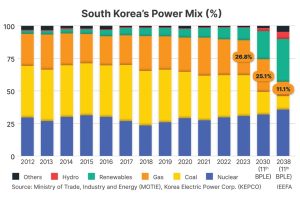A selection of the major stories impacting ESG investors, in five easy pieces.
A big step forward was taken this week by Europe to protect nature, or was it?
Viennese waltz – Sighs of relief rather than celebratory cheers greeted the formal adoption of the Nature Restoration Law (NRL) by the Council of the European Union. The NRL, which commits to restoring at least 20% of member states’ land and sea areas by 2030, had failed to secure sufficient backing from governments in March. And it only scraped through this week after Austria’s climate and environment minister defied senior coalition partners, prompting fury and threats of legal action from Chancellor Karl Nehammer. It remains possible that the NRL – which barely survived a bumpy passage through the European Parliament last year – could yet face a reverse. This would be embarrassing for Europe to say the least, and far from helpful to efforts in Colombia in October to build out the Global Biodiversity Framework, particularly given the limited progress made on setting COP16’s agenda at an interim summit in Kenya last month. Even if the NRL remains untrammelled by Austrian political strife, intergovernmental negotiations on how its objectives are met via member states’ national restoration plans will be instructive, given Europe’s recently redrawn electoral landscape.
The next big thing – It can take a long time to become an overnight success. And many other factors besides. Chipmaker Nvidia took 25 years to reach a market capitalisation of US$1 trillion, before more than trebling in value to US$3.3 trillion in 12 months, overtaking Microsoft and Apple this week to become the world’s largest company. The firm’s meteoric rise stems from its strong positioning to profit from the explosion of investment in AI, which is rapidly expanding beyond the IT sector to early adopters in fields such as finance and healthcare, and predicted use cases elsewhere. But does Nvidia deserve a place in a sustainable investment portfolio? The California-based firm’s ESG scores are impressive, which is not a given for a sector known for resource consumption, especially water. But a bigger sustainability question might be raised with regard to Nvidia’s client base, which has yet to prove it can deliver on AI’s promises reliably or ethically. Governance concerns and social risks have worried policymakers and investors increasingly, with rules being introduced in multiple jurisdictions and questions being asked at the recent

